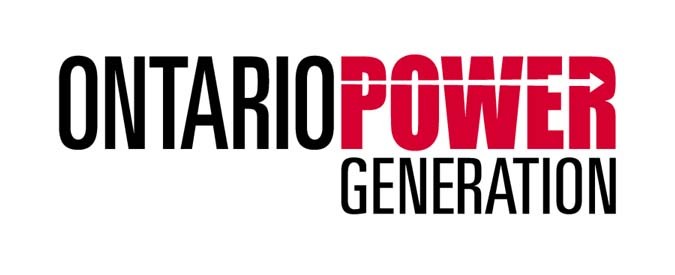OTTAWA—Ontario Power Generation’s (OPG) study of a proposed nuclear waste vault near Lake Huron is not specific enough, says Nuclear Waste Watch.
Alerting the federal Minister of the Environment and Climate Change to signals from Ontario Power Generation (OPG) that the utility intends to once more side-step information requirements related to a proposal to bury nuclear waste beside Lake Huron, 50 public interest groups from Canada and the US have sent an open letter to the federal minister with advice and analysis.
In response to a letter from the minister dated July 4, the open letter critiques OPG’s outline of its intended approach to responding to the minister’s request for additional information which she had issued in February.
“Yes, the minister had written a letter and we’ve been slow to respond,” Brennain Lloyd of Nuclear Waste Watch and Northwatch told the Recorder. “It looks again like they are not providing enough information or being specific on the work they are going to be carrying out. On the one hand this is not surprising because this is the way they have been dealing with this issue. For instance, they are just providing geological locations, they are not indicating where the actual location (of the nuclear waste vault) will be.”
Ms. Lloyd told the London Free Press in its July 20 edition that the OPG is working on a siteless site study—not a location, but hypothetical regions—and that’s not acceptable. She said this amounts to talking about the difference between evidence and ideas. The group’s new letter to Environment Minister Catherine McKenna states, “as minister it is essential that you hold them to a reasonable standard of performance.”
What OPG has proposed is a deep vault about the size of a big-box store that would house, in perpetuity, low and mid-level radioactive dry byproducts of nuclear energy production in a repository recommended beside Bruce Nuclear Power plant near Kincardine.
Opponents of the facility have several concerns, one being that it might leach radioactivity into the Great Lakes.
After several months of hearings, a review panel in 2015 recommended the environment minister allow construction plans to proceed. But after the election, and change of government, Ms. McKenna asked OPG to produce further studies by the end of 2016.
“We have sent a letter to the minister and to members of the cabinet and I’m thinking we are going to send it to all MPs in Ontario,” said Ms. Lloyd. Nuclear Waste Watch is an informal coalition of about 50 environmental groups.
The joint letter charges that “Ontario Power Generation does not intend to respond as directed. Rather than the requested information, they intend to provide another set of reports that attempt to sidestep what is required of them.”
The letter states, “we appreciate that the direction you provided Ontario Power Generation in your February 2016 letter was an effort to have OPG address some of their repeated failures to meet the requirements of the Canadian Environmental Assessment Act. However, as evidenced by their response of April 2016, it appears that OPG continues to be unwilling or unable to meet those requirements.”
The public interest groups are also calling on the minister to consult directly with the public prior to coming to a conclusion on the project.
“Indigenous peoples, past intervenors in the review process and the public more generally must be consulted on the OPG response and other related matters prior to the issuing of your decision statement. Direct consultation by you as minister is the most appropriate course of action,” the letter reads.
OPG’s proposal was to bury 200,000 cubic metres of low and intermediate level radioactive wastes produced during reactor operations deep underground in a series of caverns carved out of limestone.
In May 2015 a panel appointed by the former Conservative federal Minister of the Environment Peter Kent (and the Canadian Nuclear Safety Commission in 2012) provided the minister with its final report on the review of OPG’s proposed Deep Geologic Repository for low and intermediate level radioactive waste.
The Joint Review Panel (JRP) recommended that the federal minister approve the proposed repository, despite the expert evidence they heard throughout the public hearings about numerous technical uncertainties and an incomplete plan. In February 2016 the federal Minister of the Environment and Climate Change Catherine McKenna directed OPG to undertake additional studies prior to her issuing a decision.
OPG spokesperson Neal Kelly told the London Free Press that the utility is on track to produce the requisite studies by the end of this year. He said OPG is studying the impact of acquiring land, packaging and transportation, greenhouse gas effects and economic effect of locating a DGR on a granite base in the region of Central Northern Ontario and on sedimentary (limestone) rock in the region of Central Eastern Ontario.
Mr. Kelly said OPG has a willing host community in Kincardine. This site has already been endorsed, with some conditions, by a joint review panel following years of study and months of public review.
Opponents to this proposal say OPG should have done a detailed study of more than one site and that this one is too close to the Great Lakes. OPG has been asked to study the effects of finding potentially feasible alternate sites; analyze the potential cumulative environmental effects of putting the deep geologic repository (DGR) so near to where another underground potential story site, this one for spent nuclear fuel, may also be located; update the list of ways OPG will mitigate any identified adverse effects that project could have; and submit a report to federal Environment Minister Catherine McKenna by the end of 2016.





